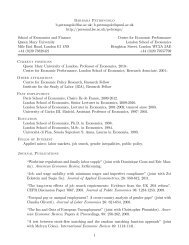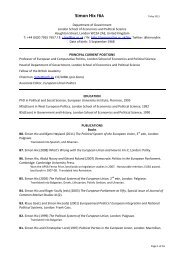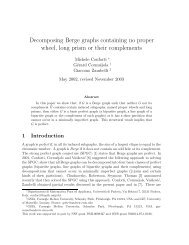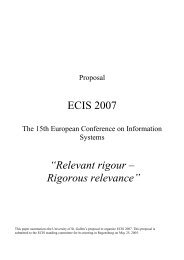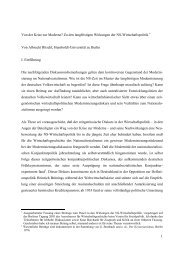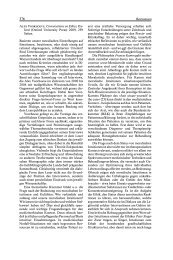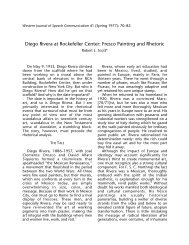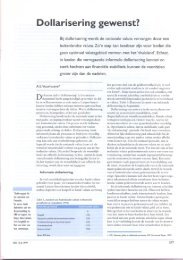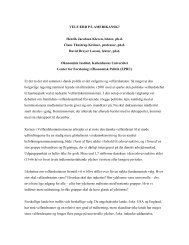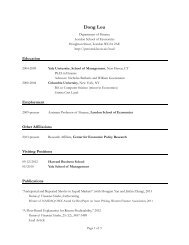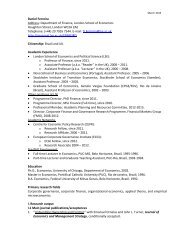View PDF - LSE - London School of Economics and Political Science
View PDF - LSE - London School of Economics and Political Science
View PDF - LSE - London School of Economics and Political Science
Create successful ePaper yourself
Turn your PDF publications into a flip-book with our unique Google optimized e-Paper software.
collectives determines their eligibility for the receipt <strong>of</strong> benefits, if any, from village<br />
redevelopment (Hsing 2010).<br />
As a result, most private tenants at present are effectively excluded from receiving<br />
compensation <strong>and</strong> are just left to negotiation with their l<strong>and</strong>lords: the outcome is heavily<br />
skewed in favour <strong>of</strong> l<strong>and</strong>lords. The most negatively affected <strong>and</strong> disadvantaged by such<br />
negotiations are the migrant tenants without permanent local hukous. Therefore, calls<br />
for the right to the city in China’s urban contexts would require close attention to the<br />
institution <strong>of</strong> hukou that differentiates urban inhabitants’ experience.<br />
Displacement, nail-houses, <strong>and</strong> property rights activism<br />
Since the early 1990s, China’s major cities have seen the intensification <strong>of</strong> urban<br />
redevelopment. Beijing, for instance, saw the introduction <strong>of</strong> a new set <strong>of</strong> policy tools in<br />
1990, which heavily relied on inputs, both technical <strong>and</strong> financial, from developers who<br />
are not necessarily private. The rapid urban transformation through inner-city<br />
redevelopment as well as sub-urban expansion has been driven by urban accumulation<br />
needs that rest on mobilising l<strong>and</strong> resources (Hsing 2010; Wu 2009). The accumulation<br />
needs involve the conversion <strong>of</strong> rural farml<strong>and</strong>s under villagers’ collective ownership<br />
into urban construction l<strong>and</strong>s for urban governments to secure more l<strong>and</strong> resources. The<br />
assembly <strong>of</strong> urban l<strong>and</strong> <strong>and</strong> the transfer <strong>of</strong> l<strong>and</strong> use rights have become critical to local<br />
state’s performance <strong>and</strong> public finance (Ding 2005). In this process, clearance <strong>and</strong><br />
demolition have also become the norm <strong>of</strong> urban spatial transformation, accompanied by<br />
a large scale <strong>of</strong> displacement.<br />
While there is a growing emphasis on establishing the “rule <strong>of</strong> law”, opportunities for<br />
citizens to put forward their legal claims are still limited. Because <strong>of</strong> this, protestors<br />
<strong>of</strong>ten make use <strong>of</strong> various “non-legal modes <strong>of</strong> resistance, including protests, petitions,<br />
<strong>and</strong> deadly confrontations” (Cai 2007:194). The measures would include: persistent<br />
appeals to higher courts; media exposure; winning the support <strong>of</strong> sympathetic (<strong>of</strong>ten<br />
high-ranking) leaders (O’Brien <strong>and</strong> Li 2005:38-42). Although protesters increasingly<br />
resort to law suits (see Hsing 2010; Johnson 2004; Zhang 2004), their attempts are <strong>of</strong>ten<br />
marred by bureaucratic processes that act as barriers to plaintiffs. Besides, the existing<br />
judicial processes tend to work in greater favour <strong>of</strong> governments <strong>and</strong> developers<br />
(Human Rights Watch 2004; Johnson 2004). Few people tend to have the will <strong>and</strong><br />
intention to resort to formal measures when it comes to contending the state (Li 2004).<br />
Shin, H.B. (2013) Antipode DOI: 10.1111/anti.12010 | Page 7 <strong>of</strong> 29



